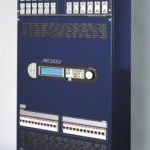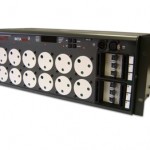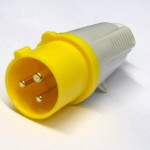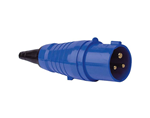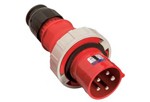Power and Dimming
Power
Power is covered in detail in its own topic called Power and Distribution, but it also relevant to Dimming and how you transfer the Dimmed power. Single and Three phase are explained in more detail on the Power and Distribution page.
Warning: Electricity is extremely Dangerous, Dimmer Racks make use off Three Phase 415V 63amp+ Connections. If you do not know what you are doing or are in any doubt please contact a Qualified Electrician.
Dimming
Most Generic lights used in stage lighting require a dimmed supply of electricity, this can be provided to the fixture by means of two ways:
- Dimmer Racks, all stored in one location with cables to the lanterns with on dimmer pack supplying 6 to 72 dimmers per rack. Dimmer Racks can draw any where from 32amp single phase to 125amp+ three phase.
- Dimmer Packs, can be placed local to the lantern with one dimmer pack only supplying 2-4 lanterns. Dimmer packs generally draw 13 to 16amp single phase max.
Option 1 is generally used in theatres as it requires simpler cabling and it allows them to have dedicated dimmer rooms which can be cooled more efficiently than a large rig with many small dimmer packs. Using dimmer Racks also normally means you can run larger fixtures such as a 5kw Fresnel, the max most dimmer packs can handle is 5amps per channel, A dimmer Rack typically will provide 10 – 32amps per channel dependant on the use and requirements.
Dimmer Packs (None Shown) are manly designed to be used on small rig’s where there is not much power available, but they are also used in awkward places to lots of power to, for example, we would use dimmer packs on T-bars that were along way from the Racks, this saved us running 4 x 50m x 15amp cable, which could have been a safety hazard.
The two pictures show two different dimmer racks, the First (Avolites) uses hard wired connections to a patch bay. The patch back is the link between the dimmer and the rig, it allows you to patch any socket or wire from the rig into any dimmer channel. The Second (Zero 88) has a 15amp socket patch on the front, this is use full if your running 15amp leads back to your dimming room. In both cases a multi-core, such as Lectroflex or Socapex, will probably carry most of the power between the racks and stage. Multi-core is used in preference to running hundreds of cabled from the dimming room to the stage. Normally each LX (Lighting) bar will get its own multi-core from the dimming room.
Power Connections
The most common connectors used are ceeform type, an industry standard for all circuits over 15A. There are three main classes of ceeform connector:
There are a few other, notable connectors:
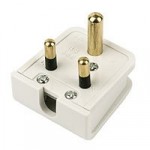 |
5A Although small and once very common, the 5A connector has almost been completely phased out although its still around in a large number of schools. |
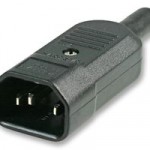 |
IEC Otherwise known as a kettle lead, this is a simple 3-pin connector found on low-power rack units. It can handle up to 6A. |
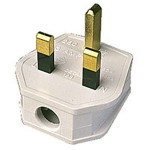 |
13A You know it, you’ve used it, it’s the 13A connector. The main disadvantages in theatre usage of the 13A connector is the fact that is contains a fuse (which is difficult to find and replace) and that you can’t tell if the circuit that it is on comes from a normal ring main or a dimming circuit. |
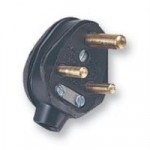 |
15A The most common lighting connector, the 15A has no fuse and is fairly cheap and sturdy. If your cable has a 15A socket on the end, you can usually assume that the circuit has a dimmer on the other end. By not having an inbuilt fuse, it means that all the circuit protection can be centralised at your power supply, reducing the time spent finding and fixing faults. |
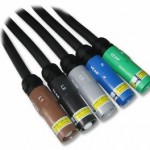 |
Camlock & Powerlock (3-phase) The Camlock connector is used for the connection of large 3-phase supplies. Very large supplies (eg. 300A 3-phase, 400A 3-phase) often utilise camlock, the five connectors being used for live1, live2, live3, neutral and earth. |
 |
Lectriflex You’ve got hundreds of lights, all needing power but you really don’t want hundreds of power cables. Therefore lectriflex (or leci) uses multiple cores to send power to 6 separate channels. It requires a leci-15A spider connector which changes from leci to 6 separate 15A sockets. Bear in mind that leci can only carry 10A down each channel and that since the connector is rated to 380V, all power must be on the same phase. |
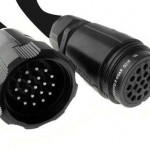 |
Socapex A very similar idea to lectriflex, carrying 6 channels of 10A power but this time using a circular connector. |
